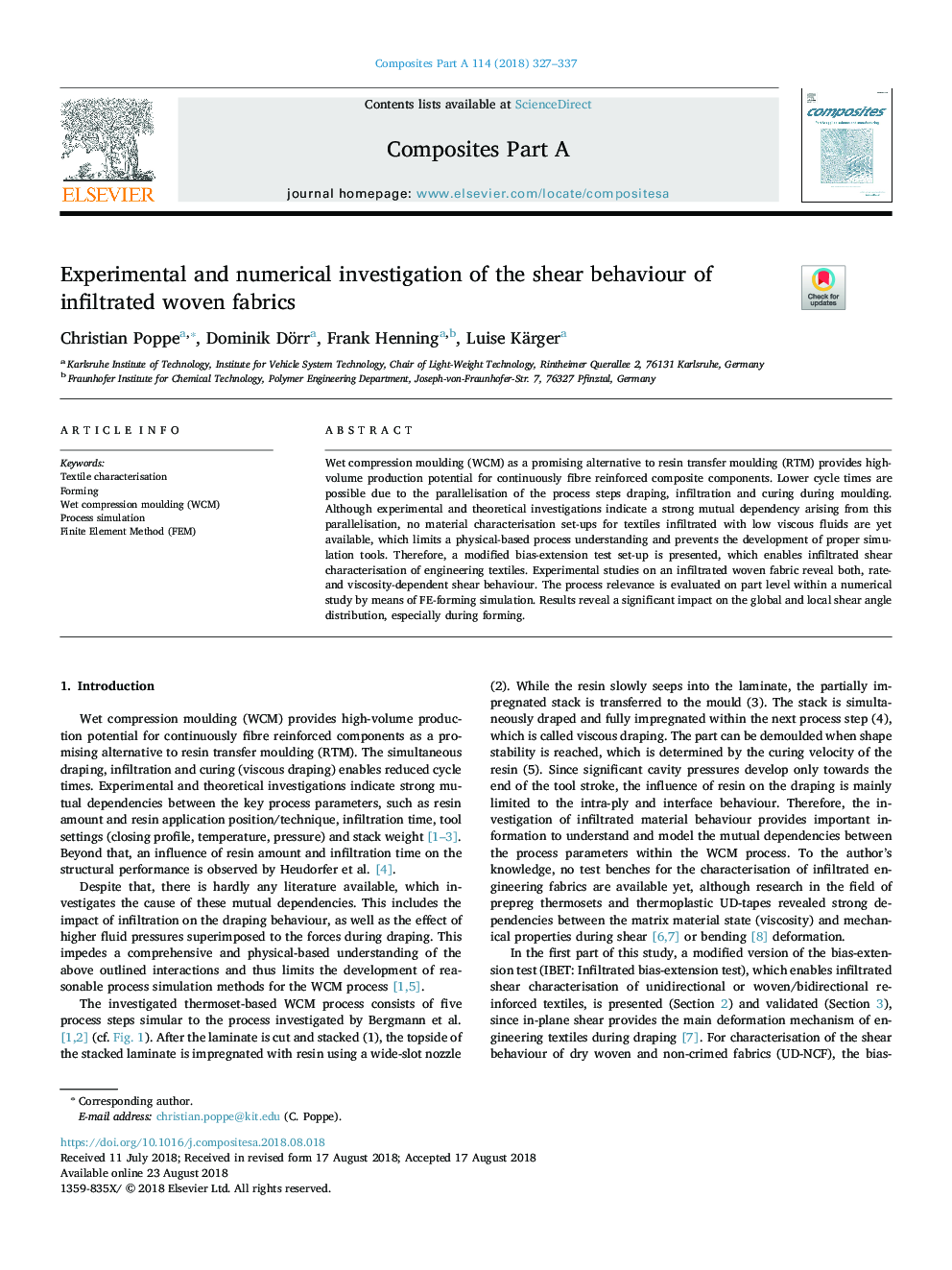| Article ID | Journal | Published Year | Pages | File Type |
|---|---|---|---|---|
| 10128359 | Composites Part A: Applied Science and Manufacturing | 2018 | 11 Pages |
Abstract
Wet compression moulding (WCM) as a promising alternative to resin transfer moulding (RTM) provides high-volume production potential for continuously fibre reinforced composite components. Lower cycle times are possible due to the parallelisation of the process steps draping, infiltration and curing during moulding. Although experimental and theoretical investigations indicate a strong mutual dependency arising from this parallelisation, no material characterisation set-ups for textiles infiltrated with low viscous fluids are yet available, which limits a physical-based process understanding and prevents the development of proper simulation tools. Therefore, a modified bias-extension test set-up is presented, which enables infiltrated shear characterisation of engineering textiles. Experimental studies on an infiltrated woven fabric reveal both, rate- and viscosity-dependent shear behaviour. The process relevance is evaluated on part level within a numerical study by means of FE-forming simulation. Results reveal a significant impact on the global and local shear angle distribution, especially during forming.
Related Topics
Physical Sciences and Engineering
Materials Science
Ceramics and Composites
Authors
Christian Poppe, Dominik Dörr, Frank Henning, Luise Kärger,
